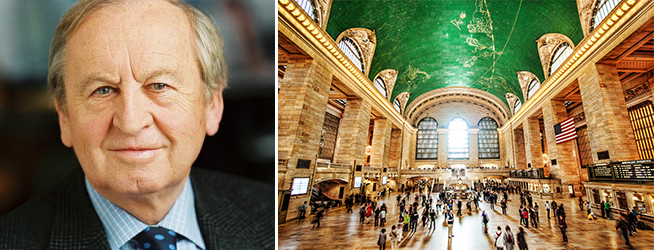Trending
John Belle, lead designer of Grand Central Terminal’s restoration, dies at 84
Architect's work brought new life to many of the city’s most iconic landmarks

The many millions of people who have marveled at Grand Central Terminal’s architectural majesty, and the many more who have passed through the building’s main concourse in the last 20 years, have John Belle to thank for the terminal’s resurrection.
Belle was an architect, steward of New York city’s historic landmarks, and a founding partner of Beyer Blinder Belle, an architectural firm that specialized in preservation. He died last week at 84, according to the New York Times.
The story of the revitalization of New York’s crown jewel, Grand Central Terminal, wouldn’t be complete without Belle, whose firm led the consortium that embarked on the iconic site’s restoration in 1990. The terminal had come close to demolition in the 1960s, soon after the equally iconic Penn Station was razed, and a 10-year legal battle over its landmark status ensued. In the 1970s and 80s, Grand Central was a dark, dirty and dangerous place that many people avoided.
When Belle’s firm began the restoration, its first step was to remove a billboard that had blocked daylight into the main concourse for 40 years. “It was as life were being breathed back into the building,” Belle wrote in “Grand Central: Gateway to a Million Lives,” a book he co-authored with Maxine Leighton. Their next step was cleaning the blackened concourse ceiling over a nine-month period and revealing the teal-green sky and gold-leaf constellations, the Times reported.
“Preservation is one of the highest forms of good citizenship,” he is quoted saying on his firm’s website. “By instilling new life into great public places and spaces of our cities, we can enrich the lives of people and communities.”
During his heyday, an intellectual battle was raging in New York over urban development, and Belle was firmly in the camp of those who believed a city should cherish its past, not demolish it. Jane Jacobs, a pioneering activist and author who respected the work of Belle’s firm, explained that at the time Belle’s position was revolutionary. “History was to the modernists, an enemy. So this was a radical realization.”
Belle’s other projects include the New York Botanical Gardens in the Bronx, and the main building on Ellis Island, the Ellis Island National Museum of Immigration, where he restored the vaulted ceiling of the Registry Room. His firm’s residential projects in New York City include Extell Development’s 70 Charlton Street, Daniel Straus’ Whitney Townhouses and Two Trees Management’s 70 Washington Street.




